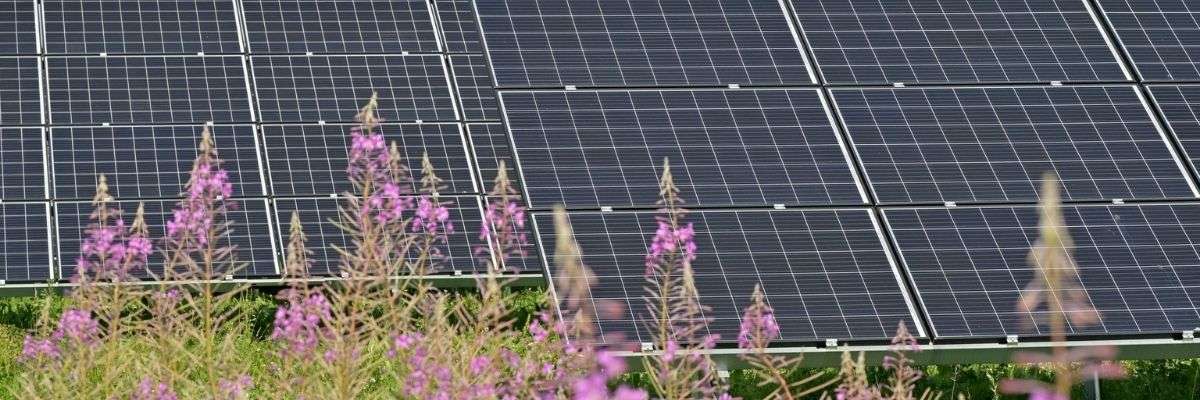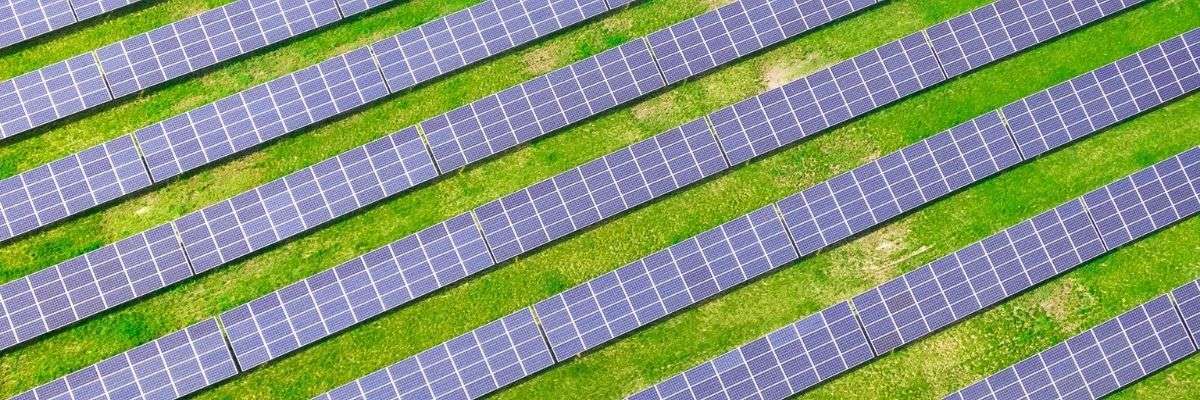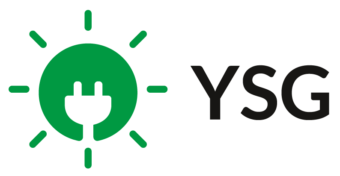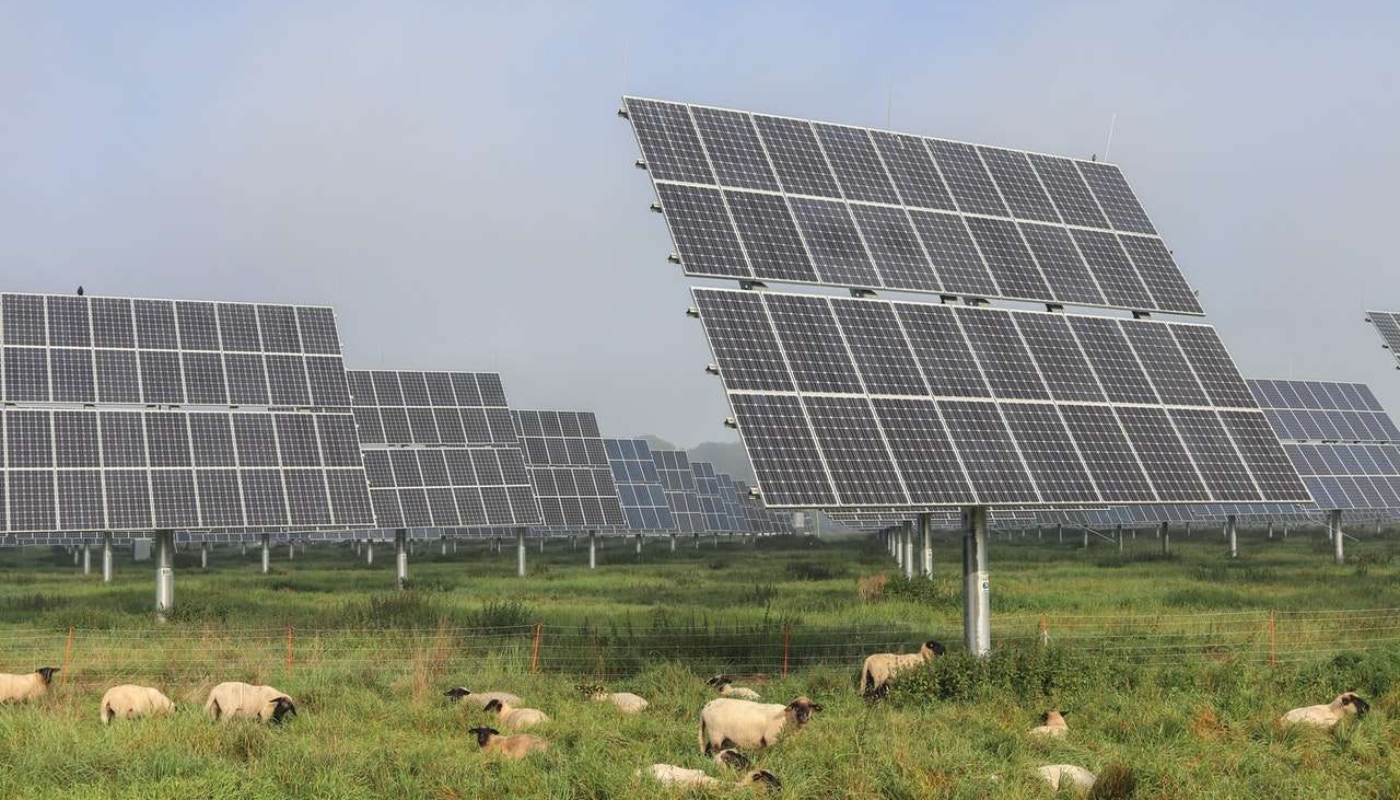A new report from energy research firm Wood Mackenzie has detailed the expected growth of the community solar sector in the coming years. According to the report, national 5-year forecasts are set to grow by 9%.
With the expansion of community solar programs across the country in states such as Illinois, Maryland, New Jersey, and New York, as well as the addition of new programs in Delaware and New Mexico, the report has found that the community solar market in the U.S. is set to exceed Wood Mackenzie’s own 2021 forecast by 9%.
It is also important to note that the report is based on current policy and market conditions, so there could be even more significant growth depending on the passage of pieces of state and federal legislation that are currently being considered in different areas of the country. Rachel Goldstein, a solar analyst at Wood Mackenzie who authored the report, offered the following comments:
“A report like this helps stakeholders understand what’s happening at a macro level in a burgeoning industry and on the micro level in the markets. Community solar is, for many people, a new way to think about how energy is delivered to customers. The states where community solar is thriving are those with supportive policies in place that break down barriers and drive investment.”
The report took its data from the results of surveys carried out with dozens of developers, owners, and operators of community solar facilities around the U.S., as well as quarterly state-by-state solar installation data from various interconnection program managers and community solar program administrators.
In particular, as Goldstein suggested in her remarks above, the report has identified a common thread in strong community solar markets—state-level policies that create third-party programs, long-term market certainty, and effective regulatory frameworks.
Top Community Solar States in the U.S.
As noted above, the expansion of community solar in certain states, alongside the opening of community solar programs in others, has been a significant factor in the strong community solar forecast for the coming years. Currently, New York is the leading growth market in terms of community solar. This strong position for NY is largely due to a strong commitment from state officials when it comes to developing new community solar projects. Perhaps most significant is the state’s Community Distributed Generation program, which has brought high volumes of community solar online in recent years, and will likely continue to drive growth in the near future.
Similarly, New Jersey is expected to contribute significantly to the growth of the community solar market in the next few years, as the state has made further investments to expand its community solar program. Notably, NJ has made its community solar program permanent one year ahead of schedule.
Illinois is looking like another potential big player in the community solar market, with the state passing an energy omnibus bill that will lead to a broad expansion of its community solar program. The 2021 legislation will bring long-term stability to the community solar program, while also allowing a backlog of waitlisted projects to move into the development phase.
Department of Energy Goals
The Department of Energy (DOE) has established the goal of enabling enough community solar to power 5 million homes by 2025. To put this into perspective, this goal would require an increase in capacity of an additional 700%. While this ambitious target does indicate general support from national leaders, reaching such a milestone will require big commitments from both state and federal policymakers moving forward. In order to support this DOE goal, the community solar industry recently committed to the development of 20 GW of capacity by 2025.
Challenges to Community Solar Growth
As well as highlighting the potential for community solar growth in the U.S., the report also outlines a number of challenges that community solar will face in states such as Maine, Massachusetts, and Maryland. The factors slowing down deployment of community solar in those states include zoning restrictions, interconnection delays, and cost uncertainty. The most notable of these challenges is the issue of interconnection, which the report has spotlighted as the leading impediment to the growth of the community solar market nationwide. As more clean energy projects come online, particularly distribution-side projects like community solar, solutions for how to interconnect these projects to the grid quickly and cost-effectively must be identified. States are already working to address these challenges, with potential solutions including integration of distribution and transmission planning, adoption of more efficient interconnection procedures, fairer compensation and incentivization of utilities to expedite the integration of distributed resources, and appropriate allocation of grid upgrade costs among customers.
Future Growth Opportunities for Community Solar
While states like New York, New Jersey, and Illinois are leading the way for community solar growth, more states such as Wisconsin and Michigan have introduced bills that could lead to state-led community solar programs. Elsewhere, a bill in Ohio would allow for the construction of community solar projects on distressed land, while new legislation in Pennsylvania could unlock hundreds of megawatts of solar projects for the state. Ultimately, further legislative commitment to community solar across the U.S. could even lead to doubling or tripling of the projections outlined in the Wood Mackenzie report by 2025. According to Jeff Cramer, president and CEO of the Coalition for Community Solar Access (CCSA), “We’re just scratching the surface of how much community solar is needed to meet customer demand and state and federal energy goals.”
Why Lease Your Land For Solar?
A big factor in the growth of community solar in recent years, and the forecasted growth in the coming years, is the urban-rural partnership which has arisen as a result of solar land leasing and community solar working in tandem. While farming is often an unstable, unpredictable business, leasing property for solar farm development offers a consistent, predictable income stream for landowners. The earning potential of solar land leasing has been a contributing factor in the increased interest in community solar legislation in states like Michigan, Ohio, Pennsylvania, and Wisconsin. While these states and others are on their way to establishing community solar programs, others are likely to follow suit. As of 2022, some of the best solar land leasing states are:
- Arkansas
- California
- Connecticut
- Delaware
- Illinois
- Maine
- Maryland
- Massachusetts
- Michigan
- Minnesota
- New Jersey
- New York
- Pennsylvania
- Rhode Island
- Vermont
- Virginia
Interested in a community solar subscription? Or a solar land lease? Reach out to YSG Solar today. YSG has been operating in the solar sector for over a decade, developing community solar projects, solar farms, residential rooftop projects, and much more. YSG will identify the ideal solar solution for your energy needs, ensuring the biggest savings on your utility bill, or the most profitable lease for your land. Call the office at 212.389.9215 or send us an email to learn more.
YSG Solar is a project development company responsible for commoditizing energy infrastructure projects. We work with long-term owners and operators to provide clean energy assets with stable, predictable cash flows. YSG's market focus is distributed generation and utility-scale projects located within North America.
Sources:
https://www.woodmac.com/press-releases/us_community_solar_2022/

